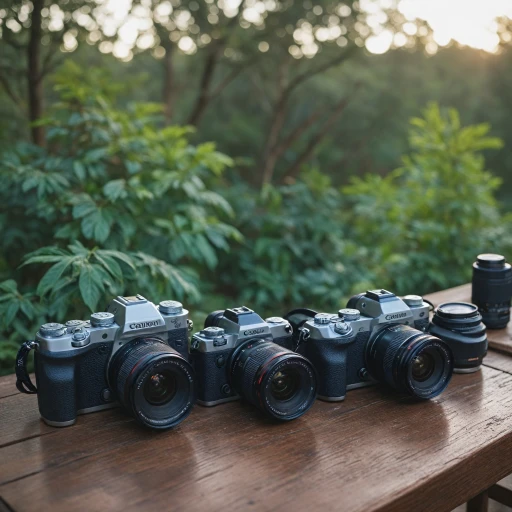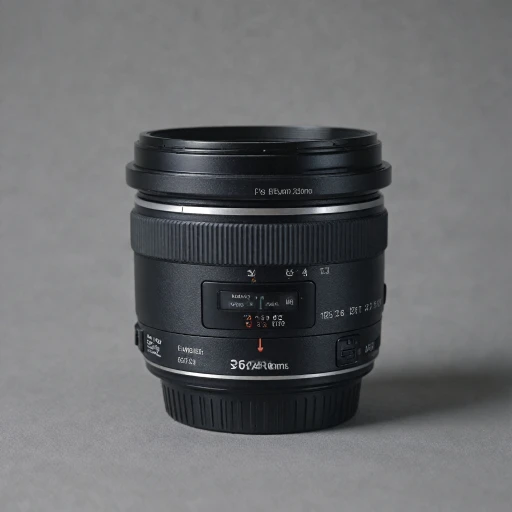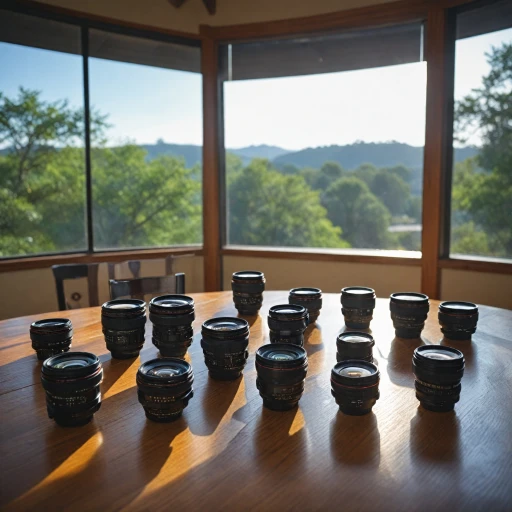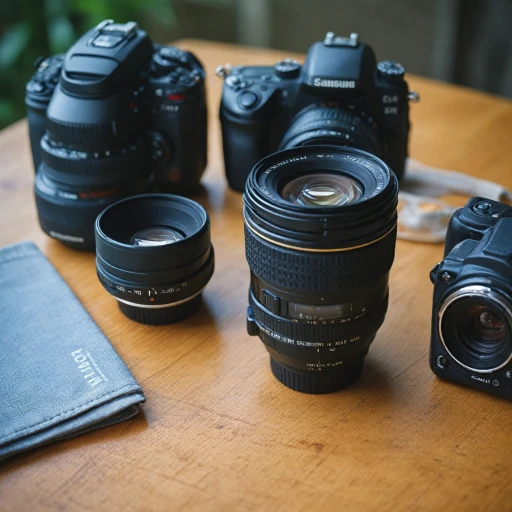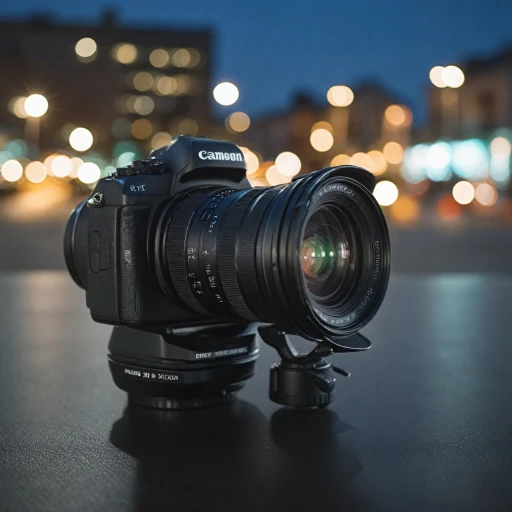
Understanding the Tamron 24-70 Lens
Key Features of the Tamron 24-70 Lens
The Tamron 24-70 lens stands out as a versatile option for photographers seeking high-quality imagery combined with innovative technology. Known for its adaptability, this lens offers features that appeal to both amateur and professional photographers looking to enhance their photography experience.
- Zoom and Focal Length: With a 24-70mm zoom range, this lens provides flexibility in capturing both wide-angle and telephoto shots, making it suitable for various photography styles, from landscapes to portraits.
- High Aperture Performance: The significant maximum aperture enables photographers to achieve a shallow depth of field and ensures better performance in low light conditions, allowing for crisp images with minimal noise.
- Image Stabilization (VC): Tamron’s Vibration Compensation (VC) technology aids in stabilizing images, making handheld shooting more effective by reducing the risk of blurred shots, even in longer exposure settings.
- Compatibility with Major Camera Brands: Available mounts for popular DSLR cameras like Canon and Nikon make it compatible with a wide range of professional grade setups, ensuring high-quality results.
- EBAND Coating: Designed to minimize flare and ghosting, this coating enhances image quality by allowing for clear and vibrant images even in challenging lighting conditions.
- Moisture Resistant Construction: This feature makes the lens durable and reliable when exposed to different weather conditions, maintaining performance and protecting your investment.
Those considering this lens will find it an excellent choice due to its competitive price, consistently stellar image quality, and broad functionality. With such attributes, it is no wonder the Tamron 24-70 can be a versatile lens for digital photography.
Performance in Different Lighting Conditions
Adapting to Low Light and Variable Lighting Conditions
When it comes to capturing stunning images in varying lighting conditions, the Tamron 24-70 lens stands out among many. Thanks to its advanced image stabilization and a consistent maximum aperture, this lens adeptly handles low light photography, ensuring high-quality images even when natural light is scarce.
Photography enthusiasts and professionals alike recognize the feature of vibration compensation as a significant advantage, particularly when paired with dslr cameras like the Canon EOS. This reduces camera shake, allowing for longer exposure times without compromise on image clarity. When used in combination with proper exposure ISO settings, photographers can achieve a level of image quality that meets the standards of both high-speed action shots and wide-open landscape photography.
Moreover, the constant maximum aperture of f/2.8 across the zoom focal length ensures uniform image quality throughout the zoom range, from 24mm to 70mm. This feature is vital for photographers who need reliable performance in dynamic lighting environments. It's especially favored in wedding photography, where quick transitions from brightly lit exteriors to dimly lit interiors are common.
As a versatile zoom lens, this Tamron lens also includes eBAND coating which reduces flare and ghosting in backlit conditions, further enhancing the lens's performance across different lighting scenarios. For photographers working in challenging conditions, such as concerts or theater performances, the moisture-resistant construction provides added protection against environmental elements.
For more in-depth insights about adapting lens choice to challenging environments, read here.
Comparing the Tamron 24-70 with Other Lenses
Comparing Tamron 24-70 with Standard and Specialty Lenses
When it comes to choosing the right lens, the Tamron 24-70mm f/2.8 lens is often compared to both standard and specialty lenses due to its versatility and quality. Photographers frequently evaluate it against prime lenses known for exceptional image quality and narrower apertures. While prime lenses offer specific focal lengths, this Tamron zoom lens provides a variable focal length, granting photographers the flexibility to adjust composition on the go.
Compared to other zoom lenses, particularly those from Canon or Nikon, the Tamron 24-70 is praised for maintaining high image quality, even when wide open at lower apertures. Image stabilization, known as Vibration Compensation (VC) in Tamron’s terminology, ensures sharp images even in low light conditions. This feature becomes crucial when capturing motion or handheld shots, where a stable image is non-negotiable. Notably, the lens offers competitive price positioning, making it an attractive option for enthusiasts and professionals alike.
For those invested in Canon EOS or other DSLR cameras, the Tamron zoom lens provides a highly compatible focal length range, which is suitable for everything from landscape to portrait photography. Although prime lenses might offer slightly better quality in controlled settings, the convenience of not changing lenses outweighs this for many users, particularly in challenging environments where time and conditions do not allow for frequent lens changes.
Besides the typical comparisons, this lens includes advanced eBAND coating which reduces flare and ghosting, providing clearer images with high contrast. The complexity in design doesn’t compromise performance, and the moisture-resistant construction assures reliability even in less than ideal weather conditions.
The Tamron lens works well paired with full frame cameras where its aperture capabilities can be best utilized to create profound depth of field effects. Similarly, it competes with sigma counterparts, particularly those celebrated for ergonomic design and enhanced stroke width features. For a durable hard case for your camera, investing in protective gear is recommended to maintain lens integrity.
Practical Applications for Photographers
Real-World Uses of the Tamron 24-70 Lens
The Tamron 24-70 focal length offers a broad range of possibilities for photographers, making it a versatile choice for both amateur and professional use. With this lens, you can capture everything from expansive landscapes to intricately detailed portraits, proving its adaptability across diverse photography genres.
Portrait and Wedding Photography
Photographers looking for a good image quality in portrait and wedding shots will find the Tamron's wide aperture and high-speed autofocus particularly effective. Its ability to produce high-quality images that maintain good detail, even in low light conditions, makes it a competitive choice among other zoom lenses.
Travel and Landscape Photography
The 24-70mm zoom range allows photographers to effortlessly switch between wide-angle shots for landscapes and closer compositions for architectural or detailed travel images. The lens’s image stabilization feature helps mitigate camera shake, which is crucial when shooting on the move or in length exposure situations.
Event and Journalism Photography
For event and photojournalism photographers, having a reliable lens is essential. The Tamron 24-70, with its moisture resistant design and vibration compensation technology, stands up well in various environments and offers reliable performance for capturing spontaneous moments in dynamic settings.
These practical applications highlight not just the versatility of the Tamron 24-70, but also its ability to produce quality photographs in various scenarios. Whether using a full frame Canon EO or a compatible Nikon body, this lens remains a valuable tool for capturing vivid and sharp images."
User Reviews and Feedback
User Experiences and Impressions Through Practical Use
In the world of photography, the Tamron 24-70 lens has earned a solid reputation among professionals and enthusiasts alike. The experiences shared by users highlight the lens's ability to perform well across a variety of settings and conditions. For those familiar with the subtle nuances of lens performance, the Tamron lens is seen as a good balance of price and performance. Many users praise the lens for its high-quality image output, particularly when considering its price category. The lens's vibration compensation ensures that images remain sharp and clear, even when using slower shutter speeds or shooting in low light conditions. The vibration reduction is a feature that many find indispensable, especially when capturing handheld shots in challenging environments. The build quality of the Tamron 24-70 is another aspect that receives positive feedback. Its moisture-resistant construction is highly regarded by photographers who often shoot outdoors, providing confidence in various weather conditions. Furthermore, the wide open aperture capabilities of the lens allow photographers to enjoy beautiful bokeh, enhancing portrait photography and artistic shots. When paired with cameras such as the Canon EOS, the lens demonstrates impressive performance, maintaining a consistent focal length and fast, accurate focus across the zoom range. Users note that the inclusion of Tamron's eBand coating minimizes flare and ghosting for superior image quality, a critical factor for professional results. Overall, the Tamron 24-70 stands out in its class, offering a high-speed zoom lens that many feel rivals the performance of more expensive options. The feedback underscores its reliability and versatility, attributes valued by those who rely on their equipment to deliver under various circumstances. For photographers seeking to maximize the potential of their gear, focusing on understanding the different lighting conditions and practical applications can further enhance the utility of this Tamron lens in their photography journey.Tips for Maximizing Lens Performance
Optimize Your Lens Usage
Maximizing the potential of the Tamron 24-70 lens involves understanding its features and adapting them to your photography style. With its variable focal length and aperture range, this lens is suitable for various settings, whether you're using a canon eos or another compatible DSLR camera.
Consider these tips when using the Tamron lens:
- Understand the Aperture: Utilize the wide open aperture to capture impressive images in low light conditions. Adjusting the exposure iso when the lens is set to its widest aperture will help enhance image quality.
- Leverage Vibration Compensation: The lens is equipped with vibration compensation which helps in minimizing camera shake. This feature is especially advantageous in capturing images with high zoom settings or in low light.
- Maintain Good Focus: Practice focusing techniques to utilize the wide focal range. The lens works well on both crop and full frame cameras, so ensure it’s calibrated for the specific body you’re using.
- Protect Your Investment: The Tamron lens is moisture resistant, which guards it against adverse weather conditions. So, you're free to shoot in diverse environments.
Settings and Maintenance
Ensure your dslr cameras are set to complement the lens capabilities. Regularly clean the lens after use to maintain its prime condition. The lens's built-in eband coating helps reduce flare, ensuring clarity in high and low contrast settings.
Investment Worth
The lens's price is generally well-justified given its build and performance, especially when considering its high speed and image stabilization features. Expect to pay a premium for the benefits, but it aligns with other high-quality lenses in the market. The investment will fill the needs of both amateur and professional photographers, owing to its versatility.


